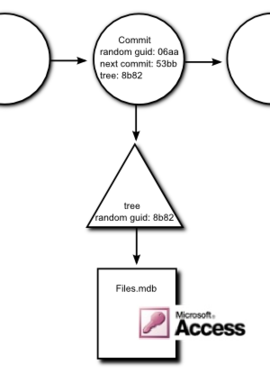Git
“Git is CVS done right”
Git is a source code management system with an emphasis on obscure technical terms.
History[edit]
“I'm an egotistical bastard, and I name all my projects after myself. Except git, which I named after BitKeeper's CEO”
Although originally developed for Linux, git now has peerless Windows support via a one-click-installer that sets up a Gentoo virtual machine and git bash which pipes all the commands you type to it.
Command Line Interface[edit]
Advanced users can use shell commands to directly perform low level operations used internally by git's higher level commands, such as
git track -master \* HEAD -- myfile
which moves a file from the index into the cache without staging it, and
git track master \* HEAD -- myfile
which reformats your hard drive.
There are also shortcuts (known as porcelain) that do exactly the same thing as a git command, but in a simpler, less confusing way, e.g. hg init, hg add, etc.
Data structures[edit]
The design of Git only permits non-empty lines to be tracked and nobody competent enough to make the change to allow empty lines has cared enough about this situation to remedy it. Developers are advised put in placeholder text to overcome this limitation, as in this example C++ code:
/* Hello World program */
// This line deliberately left blank
#include<stdio.h>
// This line deliberately left blank
main()
{
printf("Hello World");
// This line deliberately left blank
}
As well as not tracking blank lines, git also doesn't track renaming of files. Infact, renaming files isn't supported at all;
git mv myfile myfile1
is simply a shortcut for
mv myfile myfile1 git add myfile1 git track master \* HEAD -- myfile

